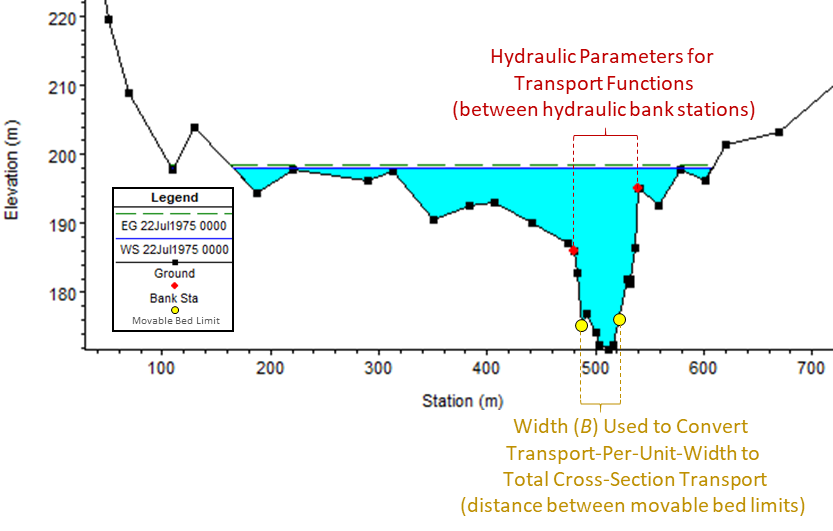Modeling Note: Transport Based on Channel Hydraulics
The transport functions compute a transport capacity for each cross section based on they hydrodynamic results (e.g. shear stress, shear velocity, friction slope, velocity, fall velocity, etc…) of the channel. By default, the 1D hydraulic simulations in HEC-RAS uses "bank stations" to divide each cross section laterally in into a "channel" zone and two "overbank" zones (LOB, ROB). The transport functions only use the channel hydraulics. (not the cross section average hydraulics and not the hydraulics between the movable bed limits, which are the most common misunderstandings).
However, because HEC-RAS uses channel hydraulics for transport, does not mean overbank hydraulics are not important. Flow that spills out to the overbanks is "lost" to transport. So users must choose good overbank n values and apply ineffective flow areas skillfully, to make sure that transport capacity transitions relatively smoothly from bank-full flow to floodplain inundation.